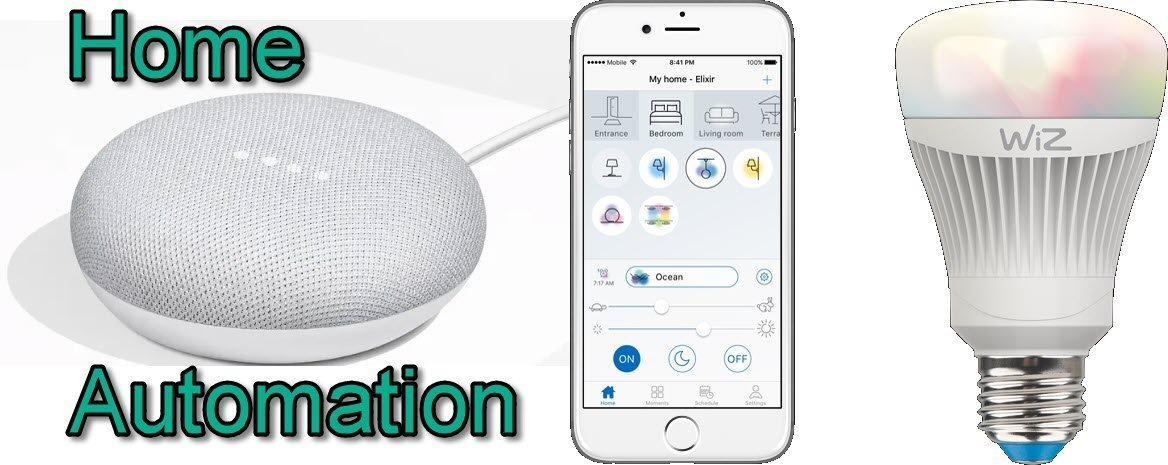With all the hype around home automation, flying cars and robots greeting you in restaurants, I thought I would resist the urge, but then one day I went to Bunnings, that ultimate man-cave where many a dad and husband can be seen wandering the aisles (pc link here). I strayed into the lighting aisle after snapping up a bargain on a desk lamp (with LED globe) for 4 dollars and I thought about a problem I have in Darwin with a dark area between my garage and my back sliding door.
It probably would be cheaper to have picked up one of those solar powered motion sensor spotlights and as it turns out I will probably have to do that.
Let me jump to my purpose (apart from experimenting and writing about it) and the requirements along with side uses and benefits that appeared after I installed it. I’ll finish with gotchas and overall thoughts.
Of course – although I’d like someone to fund me for these experiments – they were paid for with my own cold hard earned cash – minus powerpass discount – which any serious Bunnings going person should have… This is just the disclaimer thingy that states I am not getting anything for mentioning a particular brand – a bit like Scott Pape in the Barefoot Investor.
Small tip here – coming home with an armful of goods from Bunnings is sometimes a dangerous mission if you are spotted by your partner who demands to see the receipt… With the inevitable discount you get, the trick is to cover the total amount and Bunnings conveniently prints the saving in larger text at the bottom of the receipt – display the receipt just showing the discount and announcing in a positive happy voice “Look how much I saved…”
Doesn’t always work, but can soften the berating.
Meanwhile, back at the main job – Home automation. I bought a 20 dollar “smart” light – single colour Wiz light as it was cheap, worked with google and amazon along with iOS and Android (more on that later) and didn’t need a separate hub.
I also noticed Google Home Mini was on sale for $44 dollars and thought “why not”.
Lights come in two major types of fitting – bayonet and edison (which is the screw in type) – I notice that desk lamps in the shape of the pixar lamp seem to use edison screw in fittings but everything else in our Darwin, Melbourne and even my Mum’s house seems to use a bayonet fitting… Of course I purchased an edison screw fitting – which means that light is doomed to spend its days in a portable desk lamp. So – check what fittings you have at home before buying a 20 dollar light… Luckily I worked that out before making my next purchase of three lights, which was a pack of two white smart lights and a single colour light – all bayonet. $38 for the pack of two white lights and $65 for the colour light – let me tell you they are wonderful, gimmicky and if you want to turn your kitchen into a disco or by burning toast create a smoky jazz club effect – I’d pass on the colour light and purchase more of the plain white lights (you’d get 4 for that price).
So – To start with a Home Automation experiment as cheap as possible – you WILL need WiFi you can connect to. I haven’t tried it on our school’s guest network, but there would be value in getting it to work because in some ways it is like having a $44 dollar version of a more expensive robot in your classroom – heck, you could even build your own robot shell and insert the home mini inside…
You will need a mobile phone or tablet running iOS or Android – didn’t check to see if you can do it off a windows app and when I went to the windows store, there wasn’t a windows version in the store.
You will or should install Google Home and Google Assistant apps – these both can be downloaded naturally on Android devices, but also iOS devices like iPhones.
You will need an account with google and this is where you might want to give some thought to the security side of things… when you set this up and you are in the kitchen cooking something and someone says “Hey Google – turn off all the lights” and you are plunged into darkness with your arms covered in meatloaf mix and too far away from the speaker to shout out a command to turn the lights back on…
… or even worse – a thief says “Hey Google, unlock the door” – you might want to give some consideration to how you set these things up.
So before handing over the virtual keys to the robot in the cloud, give some thought to how you need to retain control. I will be writing more about this in future posts.
Alright, apart from WiFi, a Google Account, Google Assistant app ( this means you don’t need to buy a google home mini ) and Google Home app – you, along with your Wiz app and Wiz light are ready to set your lights up so you can annoy the rest of your family turning them on and off, dimming them and switching the night light on and off until they kick you out of the house or the novelty wears off.
First, use the Wiz app to create a “home” add a “room” and then search for lights, which not surprisingly need to be out of the box, in a light fitting and switched on. Another gotcha is that if you mess around with one of the ingredients like location, WiFi, light name you might get to the point where I did… where the light worked, but no matter what I did, the Wiz app wouldn’t recognise it. Now these lights, regardless of brand (except for Philips I think) can be manually reset by switching them on and off several times – 5 times as it turns out on my Wiz light. Even then the Wiz app seemed to have problems with my WiFi network, remembering the old password. It didn’t matter if I deleted and reinstalled the app, installed the app on another phone – it wouldn’t recognise the light. What did work was renaming the WiFi name (changing the SSID name) starting over and hey presto it recognised the light.
You can happily use the app on one or many devices to control lights in the house and in fact seeing as I am flying back to Darwin tonight, it didn’t make sense to take the one phone that had the controller on it with me. So in the app on your phone you can get a code which you share with other house members who have the app and hey presto, they can turn the light off in the kitchen when you have meatloaf or rice halfway up your arms.
Buying a Google home mini or any one of the other tools that talk back at you is not required, but it added an interesting dimension to the experiment. We only have one and that sits next to the TV which is a bad spot.
While on the topic of TVs – we have a smart TV with google android 5.xxx as the operating system on our Kogan TV. Of course you need Android version 6 to get Google Home to talk your TV. I think by adding chromecast you can make the two talk – I plan to continue controlling the remote (actually I am hardly there so that is an untrue but probably stereotypical comment). Anyway if being able to say “Hey Google, turn on the TV” is important – then you might want to consider Android versions and whether your smart TV is smart enough.
What I did like about Google Home Mini was its tolerance with different voices, the distance from which you could say “Hey Google” and the fact you could almost have a conversation with it – hence my suggestion about blinging it up as a stationary robot.
I think in homes where there is only one person – or one person and cat – Having one of these devices can act as an intelligent (most times) companion who you can ask more of than just what the time is and whether it will rain today.
Ask it about a match that is currently playing, facts about your next holiday destination, health, exercise or questions that you might normally google but by asking – the response is provided faster than you walking over to the iPad and typing it in.
If you do want your Wiz lights to work with Google Home Mini, you will have to get them to talk together and I was able to do that by simply following the on screen instructions for both applications.
My next experiment is to combine the power of a platform called IFTTT (If this, then that)
I am rushing off to a Food Service Expo in at the Melbourne Exhibition Centre now so I will stop this post here. If anyone has had experience with a simplistic house automation project, I would love to hear from you.
So what happened with the notion of home automation for the dark space between my back door and the garage? No WiFi in the house means no home automation… So it looks like I am heading back to Bunnings for that solar light.

